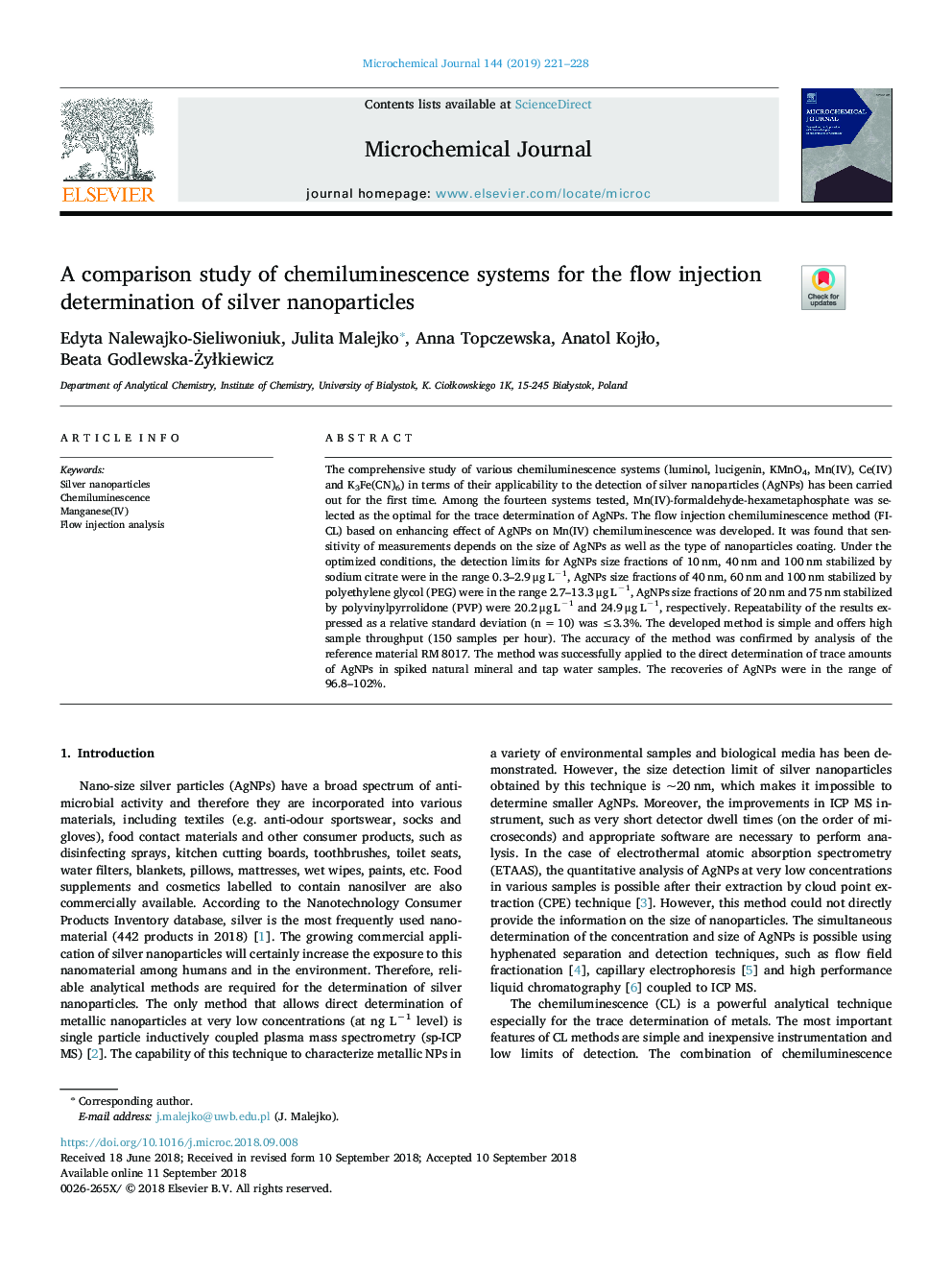| Article ID | Journal | Published Year | Pages | File Type |
|---|---|---|---|---|
| 10140978 | Microchemical Journal | 2019 | 8 Pages |
Abstract
The comprehensive study of various chemiluminescence systems (luminol, lucigenin, KMnO4, Mn(IV), Ce(IV) and K3Fe(CN)6) in terms of their applicability to the detection of silver nanoparticles (AgNPs) has been carried out for the first time. Among the fourteen systems tested, Mn(IV)-formaldehyde-hexametaphosphate was selected as the optimal for the trace determination of AgNPs. The flow injection chemiluminescence method (FI-CL) based on enhancing effect of AgNPs on Mn(IV) chemiluminescence was developed. It was found that sensitivity of measurements depends on the size of AgNPs as well as the type of nanoparticles coating. Under the optimized conditions, the detection limits for AgNPs size fractions of 10â¯nm, 40â¯nm and 100â¯nm stabilized by sodium citrate were in the range 0.3-2.9â¯Î¼gâ¯Lâ1, AgNPs size fractions of 40â¯nm, 60â¯nm and 100â¯nm stabilized by polyethylene glycol (PEG) were in the range 2.7-13.3â¯Î¼gâ¯Lâ1, AgNPs size fractions of 20â¯nm and 75â¯nm stabilized by polyvinylpyrrolidone (PVP) were 20.2â¯Î¼gâ¯Lâ1 and 24.9â¯Î¼gâ¯Lâ1, respectively. Repeatability of the results expressed as a relative standard deviation (nâ¯=â¯10) was â¤3.3%. The developed method is simple and offers high sample throughput (150 samples per hour). The accuracy of the method was confirmed by analysis of the reference material RM 8017. The method was successfully applied to the direct determination of trace amounts of AgNPs in spiked natural mineral and tap water samples. The recoveries of AgNPs were in the range of 96.8-102%.
Related Topics
Physical Sciences and Engineering
Chemistry
Analytical Chemistry
Authors
Edyta Nalewajko-Sieliwoniuk, Julita Malejko, Anna Topczewska, Anatol KojÅo, Beata Godlewska-Å»yÅkiewicz,
